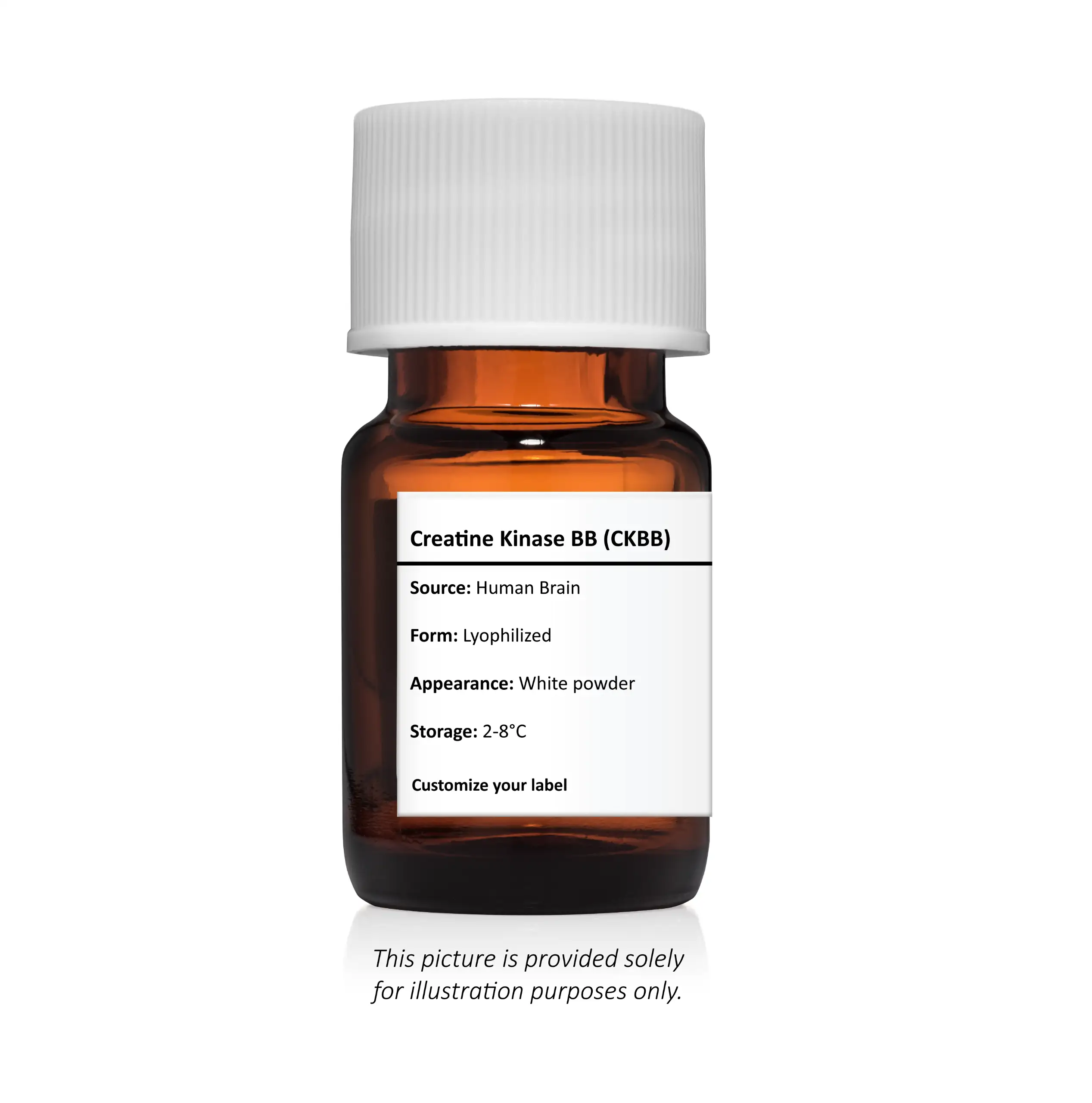Creatine Kinase BB (CKBB)
Creatine Kinase BB (CKBB) is composed of two homodimers that make CK a dimeric enzyme.
| Product Specifications | |
|---|---|
| Source | Human Brain |
| Form | Lyophilized |
| Reconstitution | Deionized Water |
| Concentration | ≥50 IU/mL |
| Purity | Immunopure is ≥ 95% by SDS Page |
| Assay | Assay performed on Roche Cobas c501 |
| Storage | 2-8°C |
| Molecular Weight | 81000-84000kDa |
| Appearance | White Powder |

CKBB is found primarily in brain tissue and serves as a catalyst for the formation of ATP from phosphocreatine and ADP when ATP is needed. It can be a very useful tool in the diagnosis and prognosis of brain pathologies such as various forms of cancer and neurodegenerative diseases (Alzheimer’s disease). Other forms of cancer have also resulted in clinically significant levels of elevated CKBB in serum. Examples include small cell lung cancer and ovarian cancer.
